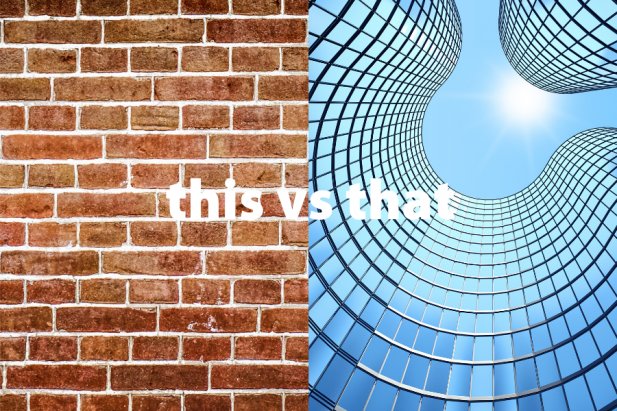
This vs. that: brick vs. architectural metal panels
Comparing the pros and cons of each
When considering the finishing touches to select for your commercial construction project, you may be wondering about the benefits and drawbacks of brick versus architectural metal panels. Both have qualities that make them an attractive choice for installing in your commercial construction, but they differ in many ways, in terms of durability, maintenance, versatility and more.
Brick and architectural metal panels: the good and not so good
Let’s stack these choices up side by side to compare and contrast them.
Features and benefits of architectural metal panels
Architectural metal panels offer many potential benefits, as well as attractive options that may appeal to you, depending on the scope of your project. Here’s a look at some of the key features and benefits.
- Metal is versatile, and choices in appearance, materials and design abound. From corrugated metal panels to horizontal planks and much more, metal panels offer loads of flexibility from a look and feel perspective.
- Metal architectural siding is also flexible from a cost perspective. From premium quality to a wide selection of budget-minded choices, architectural metal is likely to fit within the financial resources you have available.
- Metal is durable. Long gone are the days of metal siding that is easily prone to rust, peeling, scratching and corrosion. These days manufacturers take steps to coat metal and provide higher-quality panels that resist these issues.
- Metal can be extremely low maintenance.
- Metal panels are typically recyclable.
- Architectural metal panels tend to be fire-resistant, and they are not susceptible to insect damage.
- The installation timeframe is generally faster than brick, benefitting the project schedule.
- Depending on the metal panel assembly, metal panels can typically be a less expensive option than brick.
Potential drawbacks of architectural metal panels
Despite the many benefits, architectural metal panels also have some potential disadvantages to consider.
- Lower quality panels can still be subject to the issues listed above, including scratching, denting and corrosion. To avoid these, opt to invest in a higher-quality metal panel product.
- During inclement weather, architectural metal panels are likely to make more noise than brick.
- Metal panels are typically used in combination with other materials, such as brick, EIFS and/or siding assemblies, and are not commonly accepted as the only exterior finish material by municipalities.
- Specific attention is needed for flashing details at metal panel joints, as well as at transitions to other materials, to ensure the exterior building assembly is watertight.
- Depending on the metal panel assembly, sourcing qualified & experienced installation vendors can be challenging.
Features and benefits of brick
Brick is a quality option that many developers choose because of its numerous benefits. Let’s take a look at some of the reasons developers and owners opt for brick.
- Brick is known for its durability, as quality brick can last hundreds of years.
- Brick is resistant to whatever mother nature can throw at it, from insects to storms to high winds and heat.
- Brick is gorgeous. From an aesthetic perspective, brick delivers a sense of solid construction and distinction. Brick is classic and never goes out of style.
- Brick is widely accepted by municipalities, a benefit when obtaining planning & zoning approvals.
- While many have the impression that brick can be limited in its color palette, these days, brick comes in a variety of colors, so the selection is excellent.
Potential drawbacks of brick
Yes, brick is durable and timeless. But that said, there are some potential drawbacks of selecting brick. Here are some things to consider.
- Brick can be costly. Second only to natural stone, brick requires a substantial investment upfront. The cost of brick is a common reason why developers opt for other materials for their commercial construction projects.
- A brick ledge is required in the foundation to support the brick, thus increasing the cost of the foundation.
- The installation duration for brick is generally longer than with metal panels, thus impacting the project schedule.
- The availability of qualified brick masons continues to decrease over time, making it more challenging to source an economical, quality installation.
- While maintenance can be minimal, it’s vital to keep brick sealed. In cold climates, like ours in the Upper Midwest, freezing temps can lead to accelerated deterioration of the brick.
Selecting the right materials for your next commercial construction project
Choosing the ideal materials for your commercial building can be an exciting and challenging task. Keep the pros and cons of both brick and architectural metal siding in mind, and selecting the ideal solution for you will be that much easier. Having the right team on your side from start to finish is critical, and the design-build model of construction offers myriad benefits, including having a single team of trusted advisors throughout your commercial construction project. Want to know more about the benefits of the design-build construction model for your next project? Contact us.